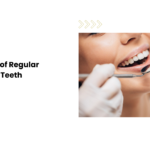How to Handle a Dental Emergency
Dental emergencies can be sudden and distressing, but knowing how to handle them can make a significant difference in the outcome. Whether it’s a severe toothache, a knocked-out tooth, or a broken dental appliance, prompt and effective action is crucial. This blog will guide you through the steps to take during common dental emergencies to minimize pain, prevent further damage, and ensure the best possible care for your oral health.
Understanding Dental Emergencies
Dental emergencies can range from acute pain and injuries to infections and damaged dental work. Recognizing the severity of the situation and taking appropriate steps can help preserve your teeth and overall oral health.
Common Types of Dental Emergencies
- Severe Toothache
- Knocked-Out Tooth (Avulsed Tooth)
- Broken or Chipped Tooth
- Lost Filling or Crown
- Abscessed Tooth
- Soft Tissue Injuries (Gums, Lips, Tongue)
- Broken Orthodontic Appliances
What to Do in Case of a Dental Emergency
1. Severe Toothache
- Rinse Your Mouth: Use warm water to rinse your mouth thoroughly.
- Floss Gently: Sometimes, food particles stuck between teeth can cause pain. Gently floss to remove any debris.
- Avoid Painkillers on the Gums: Do not place aspirin or other painkillers directly on the gums as it can cause irritation.
- Apply a Cold Compress: If there is swelling, apply a cold compress to the outside of your cheek.
- Contact Your Dentist: Seek professional help as soon as possible to identify the cause and receive appropriate treatment.
2. Knocked-Out Tooth (Avulsed Tooth)
- Handle with Care: Pick up the tooth by the crown (the part that is visible in the mouth), not the root.
- Rinse the Tooth: If the tooth is dirty, rinse it gently with water. Do not scrub or remove any attached tissue.
- Reinsert if Possible: Try to place the tooth back into the socket. If not possible, keep it moist by placing it in a container of milk or a saline solution.
- Seek Immediate Dental Care: The sooner you see a dentist, the better the chances of saving the tooth.
3. Broken or Chipped Tooth
- Rinse Your Mouth: Clean the area with warm water.
- Save the Pieces: If possible, collect any broken pieces of the tooth.
- Apply Gauze for Bleeding: If there is bleeding, apply gauze to the area for about 10 minutes or until it stops.
- Use a Cold Compress: To reduce swelling, apply a cold compress to the affected area.
- Visit Your Dentist: Promptly see your dentist to repair the damage and prevent further issues.
4. Lost Filling or Crown
- Temporary Measures: Use over-the-counter dental cement or sugarless gum to temporarily cover the cavity if a filling is lost.
- Keep the Crown: If a crown falls off, clean it and try to reattach it using dental cement. Do not use glue.
- See Your Dentist: Schedule an appointment to have the filling or crown properly replaced.
5. Abscessed Tooth
- Rinse with Salt Water: Mix salt with warm water and rinse your mouth to help reduce pain and draw out infection.
- Avoid Touching the Area: Do not try to drain the abscess or touch it excessively.
- Seek Immediate Care: An abscess is a serious infection that requires prompt dental treatment to prevent the spread of infection.
6. Soft Tissue Injuries (Gums, Lips, Tongue)
- Clean the Area: Rinse your mouth with warm salt water.
- Apply Pressure: Use a clean cloth or gauze to apply pressure to the bleeding area.
- Use a Cold Compress: Reduce swelling and pain by applying a cold compress.
- Seek Professional Help: If bleeding persists or the injury is severe, visit your dentist or go to the emergency room.
7. Broken Orthodontic Appliances
- Inspect the Damage: Assess the extent of the damage to braces or retainers.
- Cover Sharp Edges: Use orthodontic wax to cover any sharp edges that might cause injury.
- Avoid Further Damage: Refrain from eating hard or sticky foods until repairs are made.
- Contact Your Orthodontist: Schedule a repair appointment as soon as possible.
Preventing Dental Emergencies
While not all dental emergencies can be prevented, taking certain precautions can minimize the risk:
- Wear a Mouthguard: Use a mouthguard during sports and physical activities to protect your teeth.
- Avoid Hard Foods: Stay away from hard candies, ice, and other hard foods that can crack or break teeth.
- Maintain Regular Dental Visits: Regular check-ups can help identify potential issues before they become emergencies.
- Practice Good Oral Hygiene: Brushing and flossing regularly can prevent infections and decay that could lead to emergencies.
Conclusion
Handling a dental emergency promptly and effectively can make a significant difference in the outcome. By following the steps outlined above and seeking professional dental care when needed, you can protect your oral health and ensure a faster, smoother recovery. Remember, preparation and prevention are key, so maintain regular dental check-ups and take preventive measures to reduce the risk of dental emergencies.



